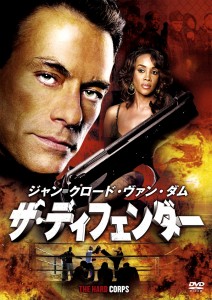Director: Andrew Davis
Cast: Chuck Norris, Henry Silva, Bert Remsen, Mike Genovese, Nathan Davis, Ralph Foody, Allen Hamilton, Ron Henriquez, Joe Gualdo, Molly Hagan, Ron Dean, Wilbert Bradley, Dennis Farina, Gene Barge, Mario Nieves
Running Time: 101 min.
By Zach Nix
Code of Silence is widely regarded by critics and fans as Chuck Norris’ strongest film in his lengthy and varied filmography of martial arts actioners. Produced by Orion Pictures in 1985, the film is a great representation of the mature and respectable actioners that their production company churned out in the 80s that somewhat resembled but always eclipsed the kind of action films put out by Cannon Pictures, who housed most of Norris’ own 80s output in the first place (Invasion U.S.A. and Missing in Action 2: The Beginning were released the same year). In a sense, Orion was the more successful and professional version of Cannon, producing films with larger budgets, bigger stars, accomplished box office receipts, and favorable critical reviews. While it’s no secret that Norris is a fantastic martial arts performer, he’s not a particularly good screen actor. However, Code of Silence presents Norris at his most dramatically compelling, thanks to a helping heaping of police drama and cop centric action. Although Norris’ trademark punches and kicks are mostly sidelined, Code of Silence offers up a unique kind of Norris action picture that could have catapulted him to A-list stardom had he played his cards right.
The film is not just a showcase of Norris’ dramatic elements, but also the exemplary skills of its at the time novice director, Andrew Davis. Although he would go on to greater success with Above the Law, Under Siege, and The Fugitive, all action classics in their own right, Davis showcases early mastery of action and suspense within his first hit action film. In a sense, Code of Silence is the origin of Davis’ astounding filmmaking abilities, an important stepping-stone in his tale of minor Hollywood dominance.
Davis is one of action cinema’s most underrated directors. He’s a rare filmmaker who knows how to build tension and than deliver with satisfying action. He also lets his characters speak mostly through actions instead of their words. This attribute is applied well to Norris, who after all can barely act to save his own life. Davis was and truly is the B-picture comparison to crime auteur Michael Mann (Heat, Collateral), whose own career flourished at the same time as Davis.’ However, Davis separated himself from the rest of the B-picture filmmakers because his B-pictures possessed the maturity and skill of an A-picture, which made them more like crime dramas than simple genre pictures. It’s no surprise that Davis eventually went on to make big budget A-movies, and eventually made a film that scored a Best Picture nomination in 1993, quite the feat for a filmmaker who started out directing Chuck Norris. While it is unfortunate that Davis was never able to strike gold with successive films after his Best Picture nominee, The Fugitive, it is about time that someone recognize the director for his contributions to the action and suspense genre.
Code of Silence is tightly intertwined with Davis’ 1988 film, Above the Law, most widely remembered as Steven Seagal’s debut action film. Both films share many similarities, such as Davis’ tight direction, several repeating character actors, grounded action sequences, Chicago settings, mature themes for supposed B-pictures, and music by David Michael Frank. The Chicago setting is especially notable, as both films feature numerous shots of Chicago locales, including train tracks, bridges, moon lit rivers, and sun lit cityscapes. The plots are also similar in how each depicts the police force’s war against drugs. However, each includes mature sub-plots that add depth and complexity to the film overall, thereby elevating them above the rest of the B-picture crowd. Code of Silence takes time to tackle the moral implications of police corruption while Above the Law addresses the corruption within the CIA, something that two seemingly basic B-pictures would typically never tackle. Code of Silence was truly an important building block for Davis in order to knock Seagal’s breakout film out of the park, much the same way that Above the Law is an extension of the themes and action depicted in Code of Silence.
However, Code of Silence is a Chuck Norris picture, not simply an underrated thrill by Davis. Therefore, it would be unfair to only focus upon Davis’ contributions, although they are crucial to the film’s success. Norris plays Sergeant Eddie Cusack, a likable character for Norris to play with a tad more depth than most of his protagonists. In a sense, Cusack is very similar to Harry Callahan from Clint Eastwood’s Dirty Harry series, although a tad quieter, burlier, and likes to play with a Rubix Cube for some reason. Cusack is made more than just a gritty cop because he takes a stand against police corruption whilst never outing the corrupt individuals, thereby never making him a rat. In fact, the sub-plot about police corruption not only imbues more humanity into Cusack and the other characters, but also justifies why Cusack goes up against an army of criminals by himself at the film’s end. Therefore, Davis gives a legitimate reason for the nonsensical B-picture action that all of us action fans soak up like a sponge. Talk about good filmmaking. While Norris may be an excellent physical performer, every line that comes out of his mouth is tonally the same. Regardless, Davis’ direction and usage of Norris finds a way to get the best out of the martial arts performer in a cop thriller that suits him well. Davis may just be the best director that Norris ever worked with, alongside Bruce Lee from Way of the Dragon.
Although Code of Silence is a mature B-picture with A-picture sensibilities, it still can’t help but give into the B-picture silliness of its era, especially once a crime-fighting robot is introduced. Early on in the film, a controllable tank, entitled The Prowler, is introduced as the future of crime fighting. The robot is sort of a primitive ED-209 from RoboCop, but on wheels, which is all the more ironic given that Orion would go on to produce RoboCop two years later. Anyways, it’s odd to see a police robot in the film, as it clashes with the grounded and gritty tone of the rest of the picture. It also feels like something that you would find in a Cannon picture, as anything goes in their movies. It’s worth mentioning that Code of Silence was previously written as a Dirty Harry picture, which is no surprise given the similarities of the series and Davis’ film. However, can you imagine if Harry Callahan had fought crime alongside a robot? I rest my case. Although the robot’s appearance makes the final action sequence all the more awesome and enjoyable, it clashes with the rest of the grounded picture. Than again, I could just be a sour puss, as who doesn’t want to watch Chuck Norris fight alongside an armed robotic tank?
The final key to Code of Silence’s success is Davis’ ability to understand the value of a good supporting cast within a starring vehicle, as he tends to give a solid amount of screen time to his supporting players that most directors would leave to the back ground. The late Dennis Farina (Manhunter, Snatch), one of the all time great character actors, is featured all throughout the film as a good friend of Norris.’ He adds a lot of humor and naturalism to the cast, as he was an actual police officer at the time of shooting. Henry Silva, one of the most underrated villain performers in all of cinema, has a minor but memorable role as the film’s lead villain. While it’s a shame that he is criminally underused, a mistake that Davis corrected with Above the Law, Silva always makes any movie all the more watchable simply by appearing on screen. And finally, Code of Silence features a nice treat for 90s kids, a key supporting performance by Ralph Foody, most notable as the murderous gangster from the film within the film in the Home Alone series, who famously proclaims, “Merry Christmas, you filthy animal!” Next time you watch an action film starring a notable action lead, take into account how much time is given to the smaller supporting characters. You’ll be surprised at how kind Davis is to his supporting players, and how affective it can be to include them in on the fun.
If one reads up on the critical reviews and box office receipts at the time of Code of Silence’s release, they will discover that the film was rather successful. The film is still to this day the most critically well received action picture that Norris ever headlined, not counting films in which he appeared in a supporting or cameo role. It was also his second most financially successful action picture that he headlined, right behind Cannon’s Missing in Action. While other action stars have made far more successful films, I for one find the success story of Code of Silence quite impressive, especially given Davis’ novice standing at the time and Norris’ B-list standing that he was never able to escape. Action fans expecting martial arts due to Norris’ involvement will be disappointed, but those with a taste for crime dramas and cop actioners will find a lot to love with Code of Silence, an underrated action thriller released smack dab in the middle of the 80s that deserves to be discussed along with the best of the rest.
Zach Nix’s Rating: 7/10























3 Comments